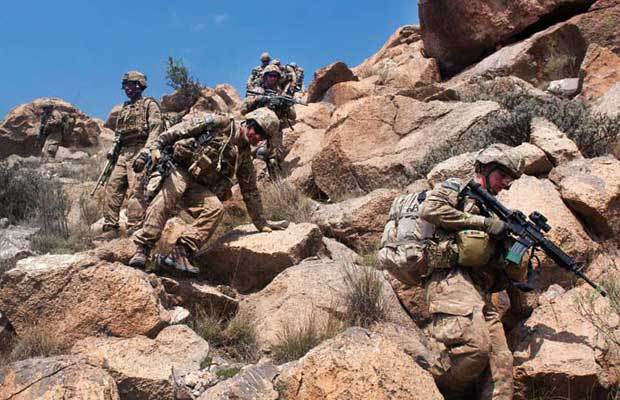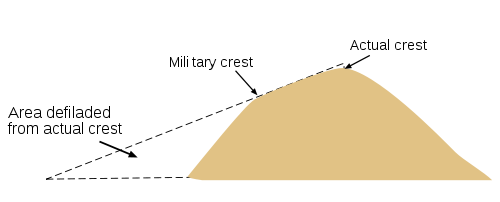
This article continues where Part 3 left off in discussing how you can dress for concealment when you are avoiding detection, potentially in a SHTF scenario. For anyone who has considered the sobering thoughts of running from hostile forces as I know many of us have, this series by Bolo is a deep wealth of knowledge that we can all benefit from immensely.
Dress for the occasion
There have been some great discussions on TPJ about the benefit of blending in with the crowd (the ‘gray man’ concept) after a SHTF incident. The general scenario is that you are moving through an urban/suburban environment with nothing more than your wits, determination and a Get Home Bag, and that your objective is to simply get home to your family as quickly and safely as possible. You may be surrounded by many people with the same objective. If you are dressed out in full camouflage, carrying 40 pounds of gear and a pump-action 12 gauge shot-gun, you will undoubtedly draw unwanted attention to yourself.
In contrast, the premise throughout this article is that you have been forced to abandon your home; that you are now beyond the urban setting. In this scenario, your manner of dress needs to support your survival rather than endanger it. You will want to be wearing colors and patterns that work for you day and night, while on the move, in shadows and while stationary. Colors that sharply contrast with a natural setting can be easily detected, even when the person wearing them is stationary. When naturally blending colors are combined with a disruptive pattern, you have camouflage.
To my way of reasoning, if you have abandoned your home and are now on foot, it means you should be wearing this type of clothing at the outset of your journey. You may not have the luxury of changing from nondescript street attire to tactical clothing at a point of your choosing. In any case, you will have wasted valuable space in your packs that could have been used for food or water.
Beyond your basic clothing I would add five important items:
- 3-hole face mask (solid dark or camo)
- Boonie type or wide-brimmed camo hat
- Shemagh (preferably dark camo pattern)
- Poncho (heavy-duty, reversible, camo pattern)
- Tactical vest
The first four items obviously contribute to comfort and concealment, while the tactical vest provides you with many additional compartments for things that you may need to reach quickly.
I am obliged to say that camo clothing does not make a group invisible when they are on the move. Camouflage works best when it becomes part of and blends in with the natural surrounding. In other words, it will be most effective when you are stationary and surrounded by natural objects such as trees, brush or boulders, etc.
Watching the Back Door
Every member of a group, whether on the move or not, should have a role, but three functions are particularly important. These are the person on point, the scout and (for lack of a better term) the “Tail-end Charlie.”
Being on point has nothing to do with the size of one’s ego. The guy up front bears the responsibility of leading you on a course that puts you at the least risk (exposure and safety) and that gets you to your destination by having selected routes that economize the expenditure of energy and time. These can be daunting and stressful tasks.
The most physically demanding activities will likely fall to the scout. The scout is one who can move competently to check out an alternate route, a potential hazard or obstacle, or opportunities such as water or shelter. Your scout must be able to provide an objective assessment and return to the group without having given your location away. The scout function may also entail the location of possible scavenging sites. It is a challenging assignment that could occur many times over the course of your journey.
Don’t think of the third role as one that relegates or demotes a team member to the rear of the column. Rather, the person at the rear has three key functions.
The first is to make sure that those ahead are not leaving high sign, trash or distinct tracks on the trail. As the video clips in Part 1 amply demonstrated, smugglers take precautions to obfuscate their tracks using various tactics, and they take effort to wipe out footprints when needed. The role of your “Charlie” requires constant attention to what is on the ground or hanging on limbs and branches in front of you. Smearing out footprints is a tedious and potentially tiring task; it can take a lot of effort if the team members ahead of you are incautious.
Second, being observant also permits “Charlie” to assure that the exertions of the group are not causing someone to become overly tired. Relative to the person on point, this position is perhaps best able to determine when it’s time to call for a rest break.
The third task is to maintain frequent watch of the trail and terrain that you have already crossed, and it involves more than a simple glance over your shoulder from time to time. There are some simple strategies for detecting a trailing group. For example, let’s say your group has just passed over the crest of a low-rise between two hills. Charlie can linger at that point for a few minutes to glass the area behind. Remember, while you have been moving through an exposed area, a group in trail of you may have been observing your movement from a point of concealment at some distance. Elevation always improves observation. Obviously, you want to know if there are people on your tail. You will be looking for color, motion, glints of light and smoke in the distance. A good set of variable power binoculars will be essential.
The functions of the scout and tail-end Charlie will occasionally require that they break visual contact with your group; therefore, radio communication is necessary. Scouting activities in particular may force the group to lay up for long periods. Charlie should be using this time to keep an eye on the back door.
Taking a Break
The number and type of circumstances that could delay your progress while on the move are beyond imagination. Terrain, route uncertainty, weather, temperature, the necessary assessment of risk to exposure or threat ahead of you, as well as the make up of your group, will decide when it is necessary to halt forward progress. Whatever distance objective you may set for the day is actually irrelevant. Accept as a ‘given’ that your group will be required to frequently pause.
Whenever it becomes necessary to suspend movement, you should ensure that the group will become stationary and concealed at a point that is some distance from your trail. Depending on the features of terrain and ground cover, the necessary distance may be as little as 50 -100 feet, but far enough away from the trail that they would not be visible. Trash and tracks that are left alongside a trail are incredibly easy to locate. Always police the break area before the group returns to the trail. Return to the trail at a different point if possible.
Elevation is your friend
If you are standing at ground level on flat terrain you can see a distance of about three miles; but, you will have obstacles (like trees) that block your line of sight. If you can raise your elevation by 100 feet, your range of vision increases to greater than 12 miles and those obstacles are now below your position. At 200 feet above the deck, your range of vision becomes slightly greater than 17 miles. These elevation gains provide the ability to spot moving groups, dust columns, smoke, and (at night) moving or distant lights that you would not be able to see at ground level.
Whenever possible, use elevation to observe the terrain, identify areas where you may be able to use natural cover as part of the day’s route. Importantly, elevation will help you identify areas that provide poor concealment while your group is on the move. When put to effective use, elevation will help you maintain a low profile throughout the day.
When elevation in not your friend
Extended periods of exposure on the top of a hill or ridge (especially a bare ridge line) invites detection from great distance.
Military crest: An area on the forward or reverse slope of a hill or ridge just below the topographical crest from which maximum observation … can be obtained.
U.S. Army Field Manual FM 101-5-1
Observation of terrain by your scout or tail-end Charlie can be conducted from the military crest of a hill or ridge; but if your group is moving on the long axis of the ridge, they should maintain a course that is above the military crest, but below the actual (topographical) crest. This will reduce the chance for detection from below. It should be noted that the area between the two crests can be good locations to set camp if good cover is provided by trees or scrub, etc.
Shadow and terrain
Wherever possible, use shadow to your advantage. Bright sunlight can produce sharply contrasting dark shadows to an observer at distance. In other words, if I am on a hilltop in full sunlight and scanning terrain at a distance, it will be much more difficult for me to detect movement in shadowy areas. If you are in shadow and wearing camouflage clothing, the difficulty in spotting you will be compounded.
Terrain features that are most capable of producing starkly contrasting shadow include: draws, ravines, gullies, bluffs, the shaded side of washes, cuts and passes through mountains, etc. Using these features will lower the profile of your group whether stationary or on the move.
Foot trails through open country
It can be a great temptation to cut a straight line path across a large open area when your objective is to reach the other side. Taking such a course would save time and energy. Even so, I would advise that you skirt the open area, using the margins where you can take advantage of tree cover and shadow to obscure movement.
Closing thoughts for Part 4
By now, you hopefully have reached an understanding that the study of terrain is an essential survival tool if SHTF forces you into a cross-country journey. The topics that I’ve used to illustrate the issues, risks and opportunities are by no means comprehensive, but they can set you on a course of thoughtful preparation. In the next, and final, segment we will address three remaining topics:
- The fallacy of setting arbitrary schedules
- Trail discipline
- Planning for success – essential tools
In the meantime, your questions and comments are welcome.























